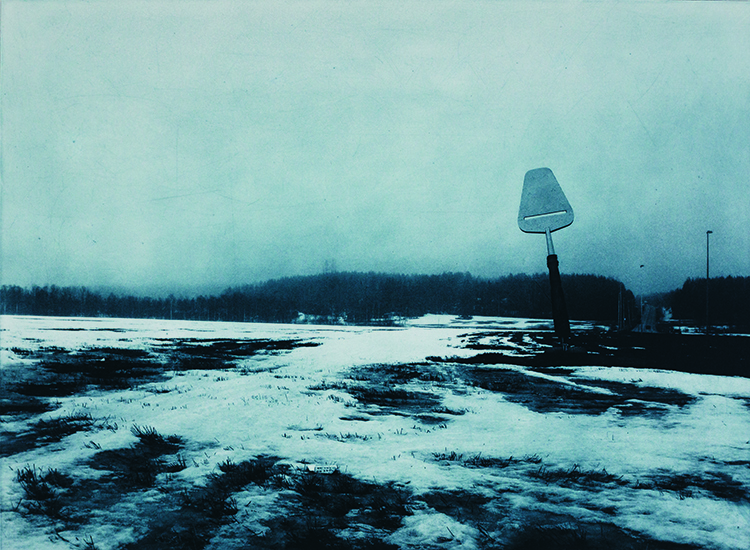Collection in transformation theme prints
Theme: Prints
21 October 2017 - 4 March 2018

Copyright Ulla-Carin Winter.
Uppsala Art Museum administers an extensive print collection that makes up roughly half of the museum's art collection, and spanning a time period of over 400 years - from the 1600s to the present. A large donation from the banker Emil Beijnoff formed the basis of the collection in the 1940s. The purpose of this exhibition is to present a selection of prints from various eras and genres that are representative of the print collection as a whole.
Printmaking originally came about as a means of creating multiple reproductions of an image, of transferring an image idea from plate to paper, over and over again. The primary methods of printing have long consisted of relief printing, intaglio, planography and stencil. Contemporary prints are a combination of the older methods mentioned above and newer printing processes, as well as new materials to work and print on. The content of the prints, the narratives of the images, reflect our time and bring it to the fore. Printmaking is truly an ever-broadening term.
Printed Images of Time
Initially, in the 16 and 1700s, copper engraving was a distinct craft with skilled engravers and printers. They reinterpreted paintings into prints, and by reproducing an image it became possible to share knowledge and information with the broader public.
Print artists have often joined forces throughout the years, ranging from the history depicting portrayers of the 1700s to the engraver Axel Fridell and the skilled Falugrafikerna (Falun Printers), a group with a unique style and technique of their own, and active in the 1930s.
Also featured in the exhibition is IX-gruppen (the IX Group), founded in 1964, consisting of nine artists. Here the group represents the breakthrough of modern print art in Sweden, now with a freer expression, with works by, among others, Philip von Schantz, Nils G Stenkvist and P G Thelander. The International part of the exhibition includes prints from Europe and the United States by artists such as Pierre Bonnard, Niki de Saint Phalle and Jasper Johns.
The young, radical artists in Sweden of the 1960s and '70s such as Carl Johan De Geer, Marie-Louise Ekman, Lena Svedberg and Lars Hillersberg are also featured in the exhibition.
In the autumn of 1989, the fall of the Berlin Wall marked the end of the DDR. The museum's collection includes several prints from the DDR era, 1949-1990, one of which is presented here. The exhibition also casts a gaze towards the pictorial world of today and includes a project section that will change over the course of the exhibition.

